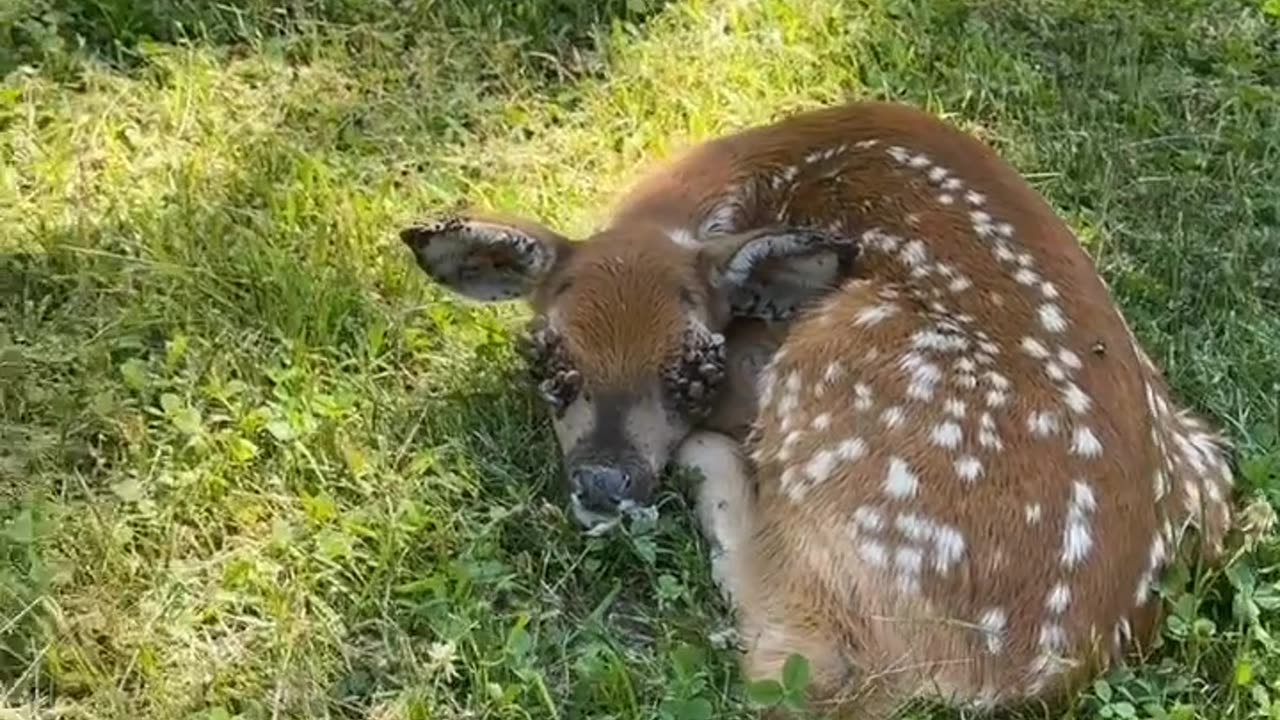Premium Only Content

The diet of parasites in deer eyes
The parasite's modus operandi is to find a suitable host animal, attach itself, and then extract nutrients or resources at the host's expense to sustain its own life cycle.
Ticks are opportunistic parasites that seek out areas on their hosts where they can feed with minimal disturbance and optimal access to blood vessels. The eyes, ears, and other facial regions of animals are prime targets for a couple of reasons.
The skin around the eyes and other facial areas is often thinner and more vascular, providing easier access to blood. Animals may groom less effectively around their eyes, allowing ticks to attach and feed with less risk of being dislodged. Grooming behaviors typically focus on areas that are easier to reach.
Additionally, many tick species release chemicals that numb the skin and reduce inflammation around the feeding site. This clever trick helps them stay hidden, allowing them to feed on their host for as long as they can avoid detection.
Parasites, like all other forms of life, will do what they must to survive and reproduce. If that means taking out the eyes of a deer fawn to ensure their own sustenance, they will not think twice about doing so.
-
 LIVE
LIVE
The Jimmy Dore Show
1 hour agoBill Maher CHARMED by Donald Trump! Speaking English Now a HATE CRIME in Britain! w/ Viva Frei
7,649 watching -
 LIVE
LIVE
Joe Pags
1 hour agoThe Joe Pags Show 4-14-25
991 watching -
 LIVE
LIVE
Sarah Westall
1 hour agoGlobal Agenda: Starve Small Business of Funds w/ Bruce De Torres
160 watching -
 LIVE
LIVE
2 MIKES LIVE
4 hours ago2 MIKES LIVE #205 with guest Nick Adams!
129 watching -
 LIVE
LIVE
LFA TV
7 hours agoThe Bread of Life | TRUMPET DAILY 4.14.25 7PM
150 watching -
 37:52
37:52
Kimberly Guilfoyle
2 hours agoThe Trump Effect, Plus More Scandals for Leticia James, Live with Roger Stone | Ep213
20.5K10 -
 1:13:45
1:13:45
Kim Iversen
2 hours agoWe're LOSING The Tariff War With China, How Our Elites Sold Us Out | Oct 7th Rape COVERUP
45.5K58 -
 1:23:13
1:23:13
Redacted News
3 hours agoTrump declaring MARTIAL LAW on April 20th according to fearmonger liberals, they want civil war
111K111 -
 2:21:58
2:21:58
vivafrei
10 hours agoEp. 259: Shapiro Home FIREBOMBED! Pavlovski Goes NUCLEAR on Dorsey Over AI! Elections Canada & MORE
96.1K50 -
 1:06:43
1:06:43
The Amber May Show
3 hours agoFinally, The Truth Comes Out In The News About What We Have Known For A While| Sam Anthony
5.59K1